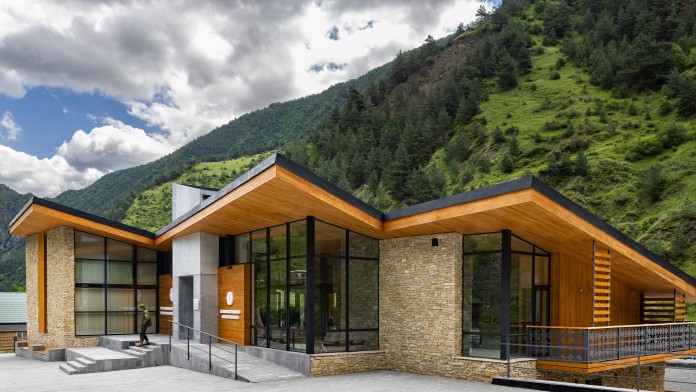As of: September 2022
The mountains and valleys of the Caucasus are home to an immeasurable treasure: their natural biological diversity. Wolves and leopards live there and rare plants can be found. It is one of the most biodiverse regions in the world. Some 6,500 plant species, 400 different bird species, 150 mammal species, 150 fish species and 80 different species of reptile have already been counted. To date, around 11% of the area in Georgia, Armenia and Azerbaijan, which are part of the Caucasus eco-region, constitute protected areas. In cooperation with the Federal Ministry for Economic Cooperation and Development (BMZ), WWF and Conservation International, KfW launched the Caucasus Nature Fund in 2007 to ensure the existing and future protected areas in the Caucasus are managed in a sustainable way.

The ecological, natural and cultural riches of the Caucasus are worth protecting. For this reason, the aim is to preserve biodiversity and habitats, especially those of endangered species such as the rare Caucasus leopard, of which very few remain. However, the protected areas in the Caucasus face many challenges, both internally and externally. Illegal logging and poaching are top of the list here. The increase in mining activities and expansion of hydropower are also placing pressure on the protected areas. Economic growth often takes precedence over the preservation of rare ecological habitats – as is the case almost everywhere in the world.
Internal shortcomings also pose a risk to the protected areas as their management is not yet ideal. Inadequate financial and material resources, cumbersome bureaucratic processes, ineffective administrative procedures and employees who lack knowledge all create problems. Even by national standards, employees’ wages were very low for a long time and could only be increased slowly. In addition, professional monitoring of biodiversity is largely non-existent. The Caucasus Nature Fund (CNF) was created to support the protected areas for these reasons.
CNF is a trust under German law. It was established by KfW in 2007 on behalf of the Federal Ministry for Economic Cooperation and Development (BMZ) and in cooperation with the non-governmental organisations Conservation International and the World Wide Fund for Nature (WWF) Germany. The German government has provided over 90% of the trust’s capital to date. On behalf of the Federal Ministry for Economic Cooperation and Development (BMZ), KfW has provided CNF with a total of EUR 95.7 million in funding. In line with a sustainable investment strategy, CNF has invested endowment capital to be held in perpetuity and currently amounting to around EUR 31 million as well as funds from an expense fund in various currencies, investments and markets. CNF uses the returns, which average at over 5%, and the resources from the expense fund to finance the projects.
The trust supports protected areas in the South Caucasus with up to half of their operating costs. Partner governments and other donors must provide the other half (or more). The funds are needed for operational purposes such as uniforms, shoes, sleeping bags, binoculars, computers, drones and cameras to monitor the wildlife, fuel for the vehicles and financial contributions towards the rangers’ salaries. In addition, CNF helps to finance the management planning for the protected areas according to international standards as well as the establishment of a system to monitor the rich biodiversity and promotes ecotourism in protected areas. To expand tourism, which scarcely existed during the Soviet Union years, hiking trails and huts are also being set up – these benefit the local population, too.
CNF supports 16 protected areas covering close to 640,000 hectares in Georgia and Armenia. In the medium term, another eight additional parks will be created; Azerbaijan will have some too. With a total of 24 areas, CNF wants to assist in providing long-term nature conservation for an area of around 900,000 hectares. Success is already evident – leopards have been able to increase their numbers because there is more prey in the form of bezoar goats, mouflon, ibex and chamois, for example. There is now evidence that these large cats have returned to parts of the Greater Caucasus as well as the Zangezur and Talysh mountains – progress towards the survival of this endangered species.
The nature conservation areas are better equipped and management plans have also been adapted. The administrations have introduced monitoring systems to curb illegal logging. In future, designated hiking trails will support the promotion of sustainable tourism. In Georgia alone, the protected areas and the associated ecotourism already benefit 325,000 people in 30 cities and municipalities in the region. The number of visitors has grown and increased from 84,000 in 2007 to more than 450,000 in 2020 in the Georgian protected areas alone.
The project contributes to the achievement of these following United Nations Sustainable Development Goals:
KfW Group
KfW Development Bank
+49 69 7431-8681